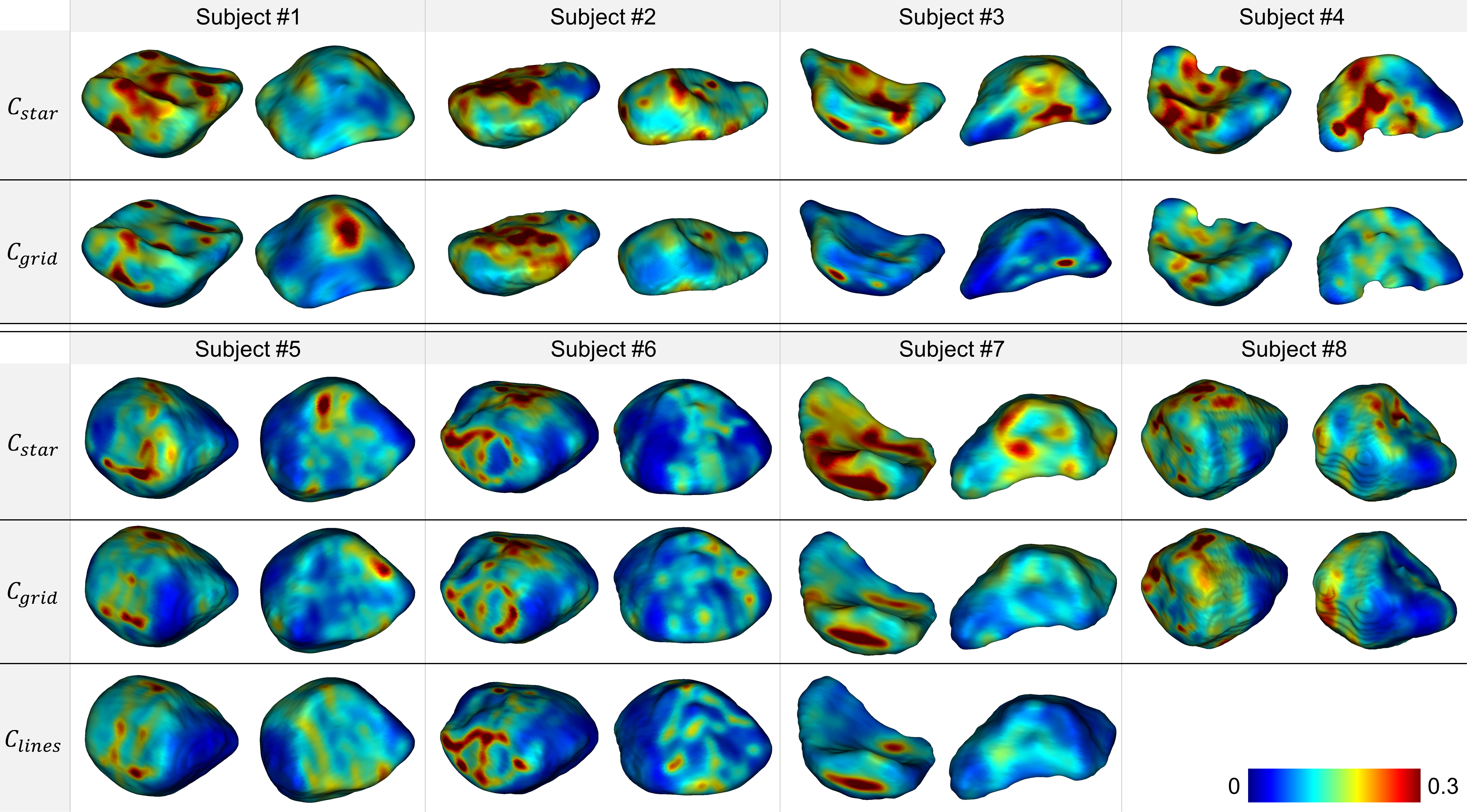3D reconstruction and characterization of pelvic organ deformations
Pelvic floor disorders are prevalent diseases and patient care remains difficult as the dynamics of the pelvic floor remains poorly known. So far, only 2D dynamic observations of straining exercises are available in the clinics and the understanding of three-dimensional pelvic organs mechanical defects is not yet achievable. In this context, we proposed a complete methodology for the 3D representation of the bladder, during exercises, directly combined with high-level 3D representation of the location of the highest strain areas on the organ surface. Image registration approaches have been combined with three geometrical configurations of rapid dynamic multi-slices MRI acquisition for the reconstruction of real-time dynamic bladder volumes. We assessed the potential of our method on eight control subjects throughout bladder loading from forced breathing exercises. We obtained average volume deviation of the reconstructed dynamic volume of bladders around 2.5\% and high registration accuracy with mean distance values of about a few millimeters. Immediately transferable to the clinics with rapid acquisitions, the proposed pipeline represents a real advance in the field of pelvic floor disorders as it provides, for the first time, a proper 3D+t spatial coverage of bladder. This work is intended to be extended to patients with cavities filling and excretion to better characterize the degree of severity of pelvic floor pathologies for diagnostic assistance or in preoperative surgical planning.


Bibliography
- Journal articles
-
Three-dimensional reconstruction and characterization of bladder deformations
Augustin C. Ogier, Stanislas Rapacchi, Marc-Emmanuel Bellemare
Under review

- Conference papers
-
Combining loss functions for deep learning bladder segmentation on dynamic MRI
Marc-Adrien Hostin, Augustin C. Ogier, Stanislas Rapacchi, Nicolas Pirro, Marc-Emmanuel Bellemare
IEEE EMBS International Conference on Biomedical and Health Informatics (BHI), Jul 2021, Online

-
3D Dynamic MRI for Pelvis Observation - a First Step
Augustin C. Ogier, Stanislas Rapacchi, Arnaud Le Troter, Marc-Emmanuel Bellemare
The 16th IEEE International Symposium on Biomedical Imaging (ISBI), Apr 2019, Venice, Italy, pp.1801-1804
DOI: 10.1109/ISBI.2019.8759589

-
Suivi dynamique 3D des organes pelviens - résultats préliminaires
Augustin C. Ogier, Stanislas Rapacchi, Arnaud Le Troter, Marc-Emmanuel Bellemare
GRETSI, Aug 2019, Lille, France
